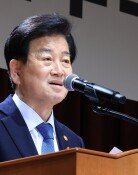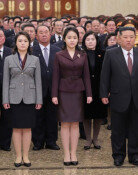N. Korea claims firing of cruise missile near the sea of Ulsan
N. Korea claims firing of cruise missile near the sea of Ulsan
Posted November. 08, 2022 07:43,
Updated November. 08, 2022 07:43
North Korea claimed it fired two strategic cruise missiles near the shores of Ulsan, the southeastern part of South Korea on Wednesday, which South Korea dismissed as deception tactics. North Korea fired a short-range ballistic missile near Sokcho, south of the Northern Limit Line (NLL), for the first time since the demilitarized zone was created, and South Korea responded by firing an air-to-surface missile north of the NLL. North Korea then falsely claimed that it had verified its nuclear targeting skills to the far south of South Korea.
The military general staff of North Korea announced military operations that had taken place from Nov. 2 to 5 on the Rodong Sinmun on Monday, claiming that it had achieved all the goals of its combat operations successfully.
Notably, North Korea claimed that it had fired two missiles that traveled a range of 590.6 kilometers from North Hamgyong Province to open sea 80 kilometers from Ulsan on Nov. 2. The military general staff unveiled photos of the missile, as well as latitude and longitude of the missile location.
South Korea issued a rebuttal to this claim. “Though it is not easy to specify the firing location of a cruise missile, it would have been identified by a Green Pine Radar, Peace Eye (airborne early warning and control system aircraft), or Aegis Combat System. Also, the wake of the missile would have inevitably been spotted by a reconnaissance satellite or other U.S. intelligence source,” said a military official. There are, however, some views that the South Korean military might not have spotted the cruise missile if it had flown at extremely low altitudes, evading missile defense.
The South Korean military’s identification of the ICBM fired by North Korea on Nov. 3 did not match North Korea’s public reports. Unlike South Korea’s earlier reports that the ICBM was Hwasong 17 type, the missile unveiled by North Korea was claimed to be Hwasong 15 type, with two flame nozzles. “North Korea’s announcements today were not entirely true. South Korea and the U.S. take notice that North Korea did not report on the abnormal flight of the ICBM,” said a South Korean military official, raising the possibility that North Korea might have falsely announced ICBM type to hide the failure of missile firing.
South Korea considers the claim by North Korea, which argued that around 500 fighter jets were operated on Nov. 4, to be exaggerated, as only around 180 wakes of military aircraft had been identified.
North Korea claimed that the ICBM missile fired on Nov 2-5 had been equipped with armor-piercer bullets and cluster bombs, boasting efforts to diversify its provocation options to include traditional and nuclear weapons. This is the first time North Korea revealed that a scatter bomb combat unit, which disperses sub-munitions when a target is hit, was installed on the North Korean version of ATACMS (KN-24) and ultra-large multiple rocket launchers (KN-25). The North also said it conducted an important ballistic missile test fire to verify the reliability of Special Functional Combat Department operations, paralyzing the enemy’s operational command system. Experts suggest that North Korea must have tested with an electromagnetic shock wave (EMP) warhead that burns internal circuits of electronic communication equipment and renders them irreversible.






![전기매트 틀고 자면 몸에 전자파 쌓인다?” 직접 측정해보니 [알쓸톡]](https://dimg.donga.com/c/138/175/90/1/wps/NEWS/IMAGE/2026/01/02/133079758.3.jpg)
